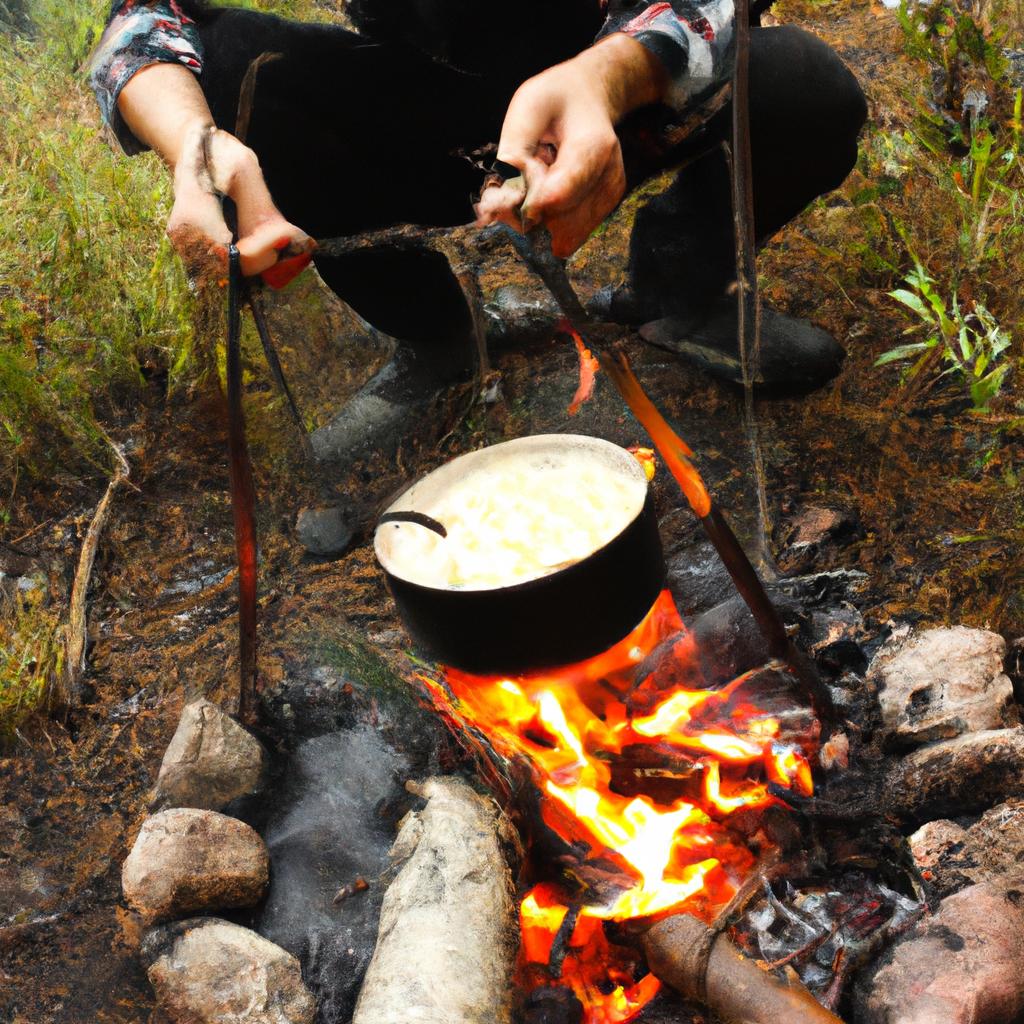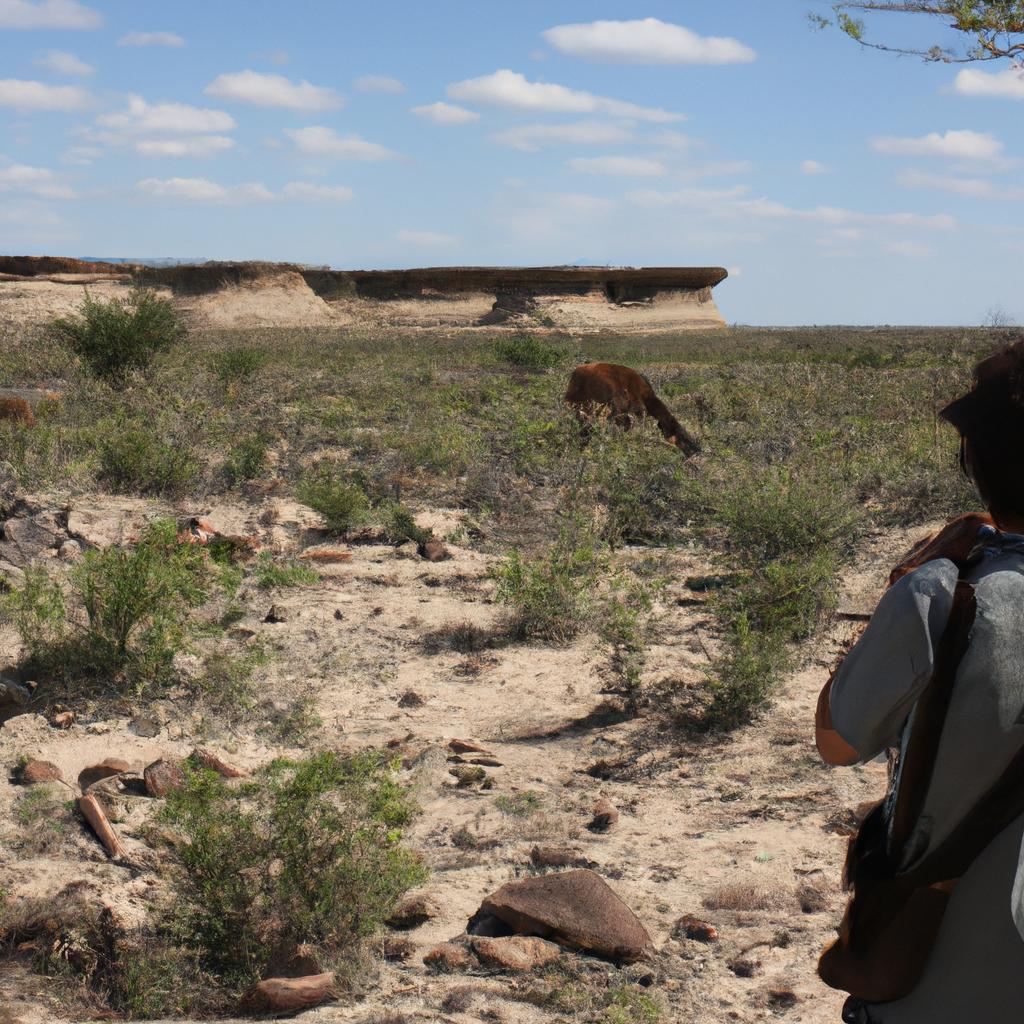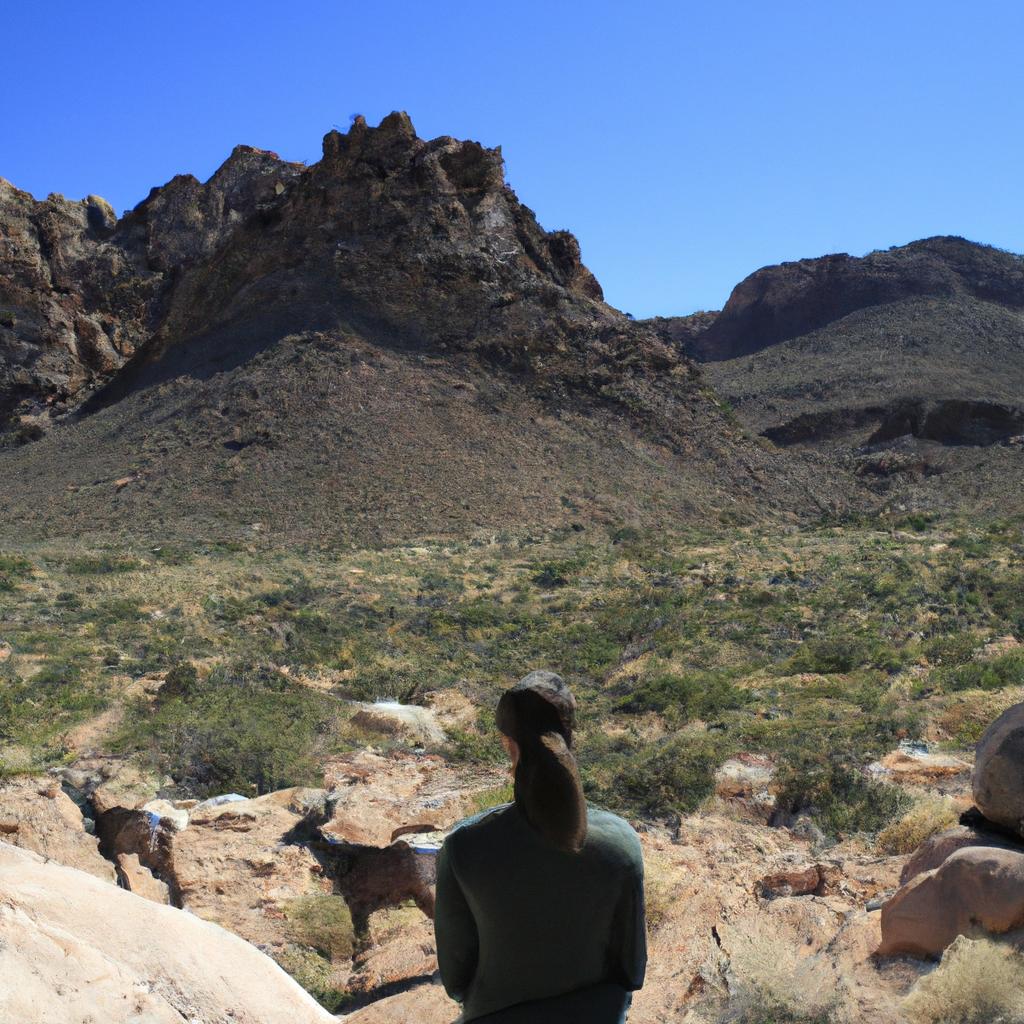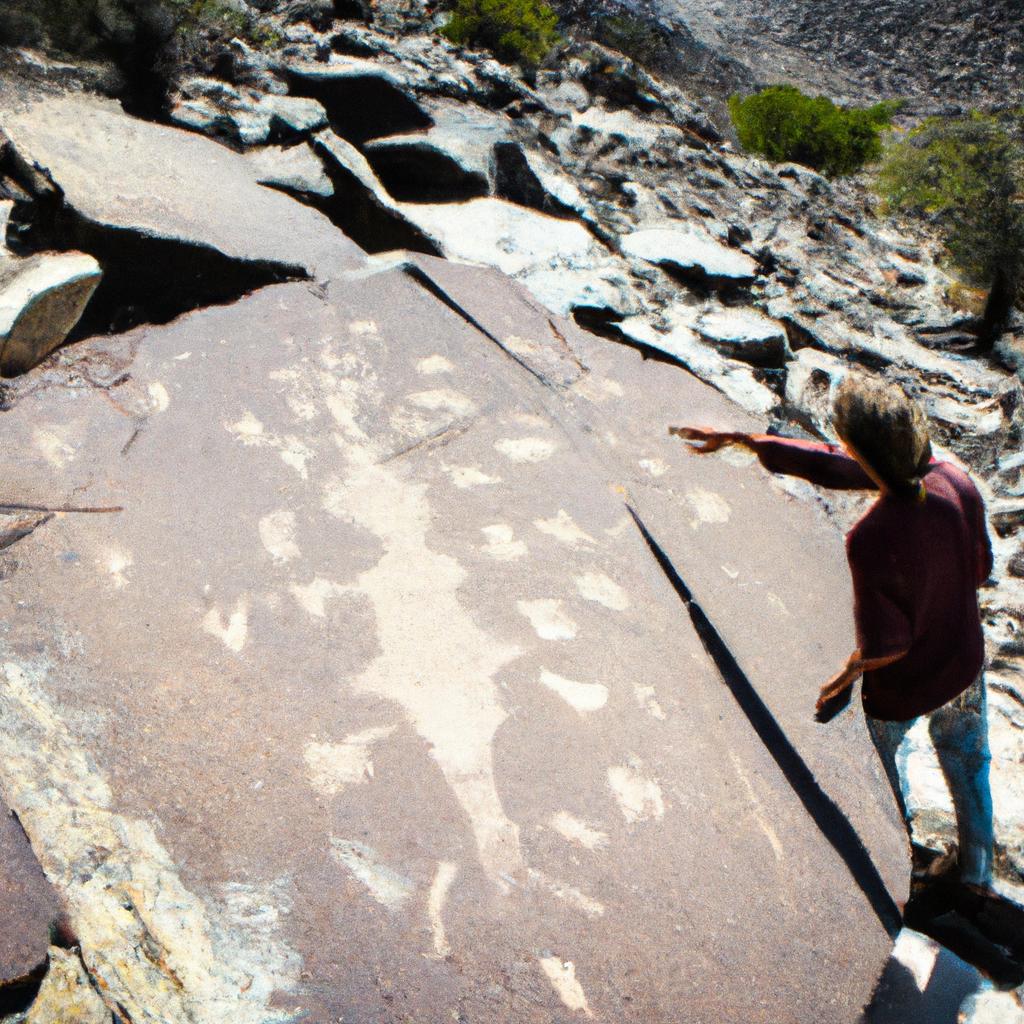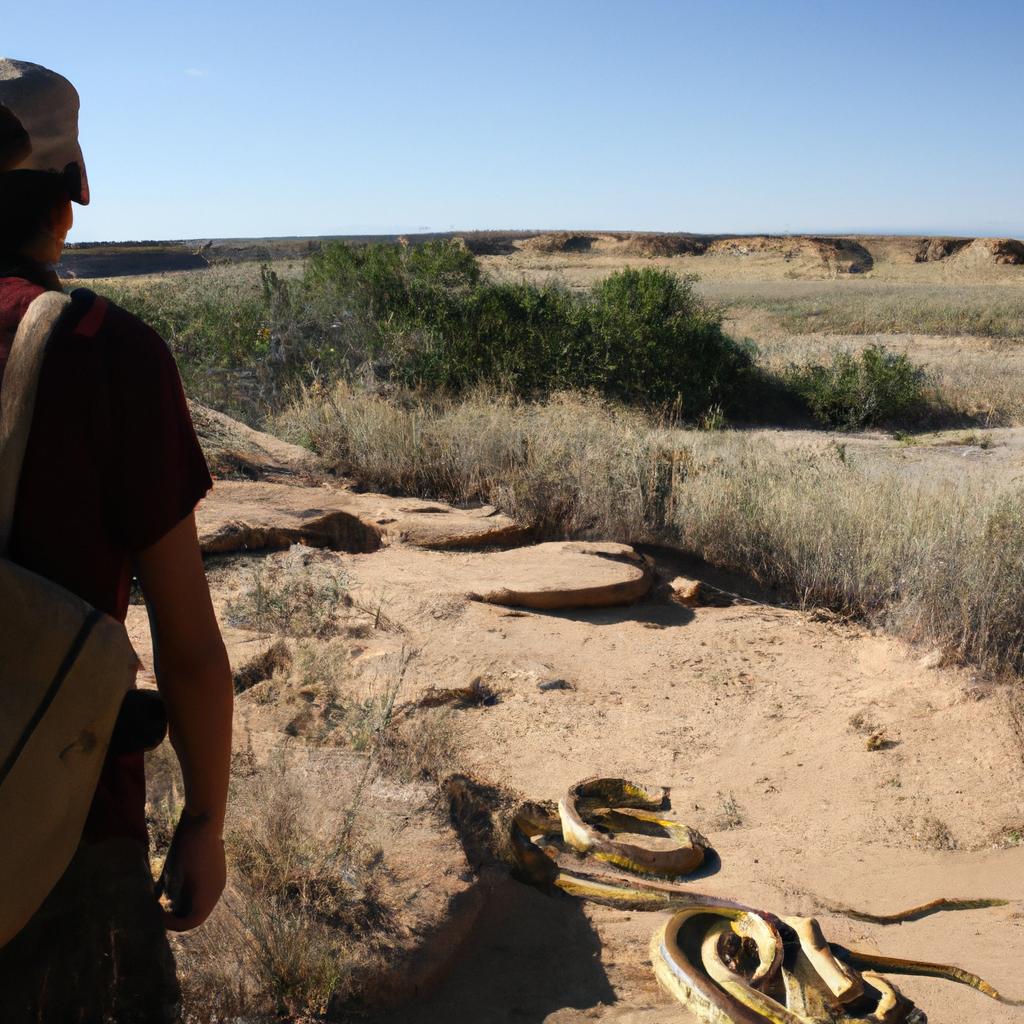Campfire cooking is a timeless tradition that brings people together in the great outdoors. Whether it’s roasting marshmallows for s’mores or creating delicious meals over an open flame, there is something magical about cooking food outside. One prime location for indulging in this culinary practice is Chaco Canyon, known for its stunning landscapes and rich history. In this article, we will delve into the art of campfire cooking and provide a comprehensive guide to experiencing the joys of dining al fresco while camping at Chaco Canyon.
Imagine yourself sitting around a crackling fire under a starlit sky, surrounded by ancient ruins and breathtaking natural beauty. This idyllic scene sets the stage for an unforgettable experience of campfire cooking at Chaco Canyon. As you gather with fellow adventurers, sharing stories and laughter, the aroma of grilled vegetables and seasoned meats fills the air. The combination of fresh ingredients and primitive cooking techniques creates flavors that are unparalleled. From succulent steaks seared to perfection to hearty stews simmered slowly in cast-iron pots, every meal becomes a celebration of nature’s bounty when prepared over an open flame.
By following our guide, you will learn essential tips and tricks for successful campfire cooking at Chaco Canyon. We will cover everything from choosing the right cooking equipment to selecting the best ingredients and mastering essential cooking techniques. Here are some key points we will explore:
-
Campfire Safety: Before you begin, it’s crucial to understand fire safety guidelines and regulations in Chaco Canyon. We will provide tips on how to safely build, maintain, and extinguish your campfire.
-
Cooking Equipment: We will discuss the different types of camping stoves, grills, and cookware options available for campfire cooking at Chaco Canyon. From portable grills to Dutch ovens, we’ll help you choose the right tools for your culinary adventures.
-
Meal Planning: Planning is essential when it comes to campfire cooking. We will guide you through creating a menu that balances simplicity with deliciousness and ensures you have all the necessary ingredients and supplies.
-
Ingredient Selection: Discover how to make the most of local produce and ingredients while camping at Chaco Canyon. We will share tips on sourcing fresh food and incorporating regional flavors into your meals.
-
Cooking Techniques: Mastering campfire cooking techniques is key to achieving mouthwatering results. We’ll cover methods such as direct grilling, indirect heat, foil packet cooking, and using cast-iron cookware.
-
Recipe Ideas: Get inspired by our collection of easy-to-make yet impressive recipes designed specifically for campfire cooking at Chaco Canyon. From breakfast skillet scrambles to gourmet s’mores creations, there’s something for every palate.
-
Cleanup Tips: Keeping your campsite clean is not only important for environmental reasons but also for maintaining a pleasant camping experience. Learn efficient ways to clean your cooking equipment and dispose of waste responsibly.
By following our comprehensive guide, you’ll be well-equipped to embark on a memorable campfire cooking adventure at Chaco Canyon. Whether you’re an experienced outdoor chef or new to this culinary practice, our tips and insights will ensure that your meals are not only delicious but also an integral part of the overall camping experience. So grab your cooking gear, gather around the fire, and let the magic of campfire cooking at Chaco Canyon begin!
Choosing the right campfire cooking equipment
Imagine yourself in Chaco Canyon, surrounded by stunning landscapes and immersed in the tranquility of nature. As you set up your camping site, you realize that one of the most essential aspects of a successful outdoor experience is choosing the right campfire cooking equipment. Whether you are an experienced camper or new to this adventure, selecting suitable tools can greatly enhance your culinary endeavors around the campfire.
To begin with, let’s consider some key factors when deciding on campfire cooking equipment:
- Durability: When exposed to rugged outdoor conditions, it is crucial to invest in durable utensils and cookware that can withstand high temperatures and rough handling.
- Versatility: Opting for versatile equipment allows you to prepare a wide range of meals using various techniques such as grilling, boiling, or frying. This flexibility will undoubtedly elevate your dining experiences during your camping trip.
- Portability: Easy transportation is vital while embarking on any travel expedition. Lightweight and compact cooking gear ensures convenience without compromising functionality.
- Safety features: Prioritizing safety should be at the forefront of every camper’s mind. Look for items designed with heat-resistant handles or lids that prevent accidental burns.
Consider the following table highlighting different types of campfire cooking equipment along with their distinctive features:
| Equipment | Features |
|---|---|
| Cast iron skillet | Provides even heat distribution; ideal for stovetop-style recipes |
| Grate | Offers direct flame exposure for perfect grilling |
| Dutch oven | Retains heat efficiently; suitable for slow-cooking dishes |
| Camp stove | Allows adjustable heat control; convenient for quick meals |
By carefully considering these factors and exploring options like those mentioned above, you can select appropriate campfire cooking equipment tailored to meet your specific needs and preferences.
Transitioning into our next section about essential tips for building and maintaining a campfire, it is important to understand how the right equipment complements your culinary endeavors.
Essential tips for building and maintaining a campfire
Imagine you’re sitting around a campfire in the serene wilderness of Chaco Canyon, surrounded by ancient ruins and starry skies. As you watch the flames dance, it’s important to know how to build and maintain a safe and efficient campfire. By following these essential tips, your camping experience will be enhanced, ensuring both comfort and safety.
Firstly, when selecting a location for your campfire, consider the surroundings. Choose an area that is clear of any overhanging branches or flammable materials such as dry grass or leaves. This will help prevent accidental fires from spreading beyond control. For instance, imagine setting up your campsite near a pile of deadwood; one stray spark could turn into a dangerous situation.
Once you’ve found the perfect spot, follow these steps to build your campfire:
- Clear away any debris from the chosen site.
- Lay down rocks in a circle to contain the fire.
- Gather small sticks and twigs as kindling.
- Gradually add larger pieces of wood as the fire grows.
To ensure proper ventilation and fuel consumption, remember to arrange the logs in a crisscross pattern rather than stacking them densely. This allows air circulation while facilitating more even burning throughout your cooking process.
Now let’s delve into some essential guidelines for maintaining your campfire:
- Always keep water nearby: In case of emergencies or if you need to extinguish the fire quickly.
- Avoid using accelerants: Using gasoline or other chemicals can lead to uncontrollable flare-ups.
- Never leave the fire unattended: It is crucial to have someone responsible present at all times.
- Completely extinguish before leaving: Pour water on every ember until there are no signs of smoke or heat remaining.
By adhering to these precautions, you’ll create an enjoyable atmosphere while minimizing risk factors associated with open fires.
In the subsequent section, we’ll explore delicious and easy campfire cooking recipes that will elevate your Chaco Canyon camping experience. So grab your ingredients and get ready to satisfy your taste buds under the starlit sky.
Delicious and easy campfire cooking recipes
Transitioning from the essential tips for building and maintaining a campfire, let’s now explore some delicious and easy campfire cooking recipes. Imagine sitting around a crackling fire under a starry sky, surrounded by nature’s beauty while indulging in mouthwatering dishes prepared over an open flame. One such recipe to tantalize your taste buds is Campfire Tacos.
Campfire Tacos:
- Ingredients:
- Ground beef or chicken
- Taco seasoning mix
- Tortillas
- Shredded cheese
- Chopped lettuce
- Diced tomatoes
- Sliced avocados
To prepare Campfire Tacos, follow these steps:
- Heat a cast iron skillet over the campfire.
- Cook the ground beef or chicken until browned.
- Add taco seasoning mix according to package instructions.
- Allow it to simmer for a few minutes.
- Warm tortillas on the grill grate or directly on the coals.
- Fill each tortilla with cooked meat, shredded cheese, chopped lettuce, diced tomatoes, and sliced avocados.
- Fold the tortilla into a taco shape and enjoy!
Now that we’ve explored one delectable recipe, here are four additional ideas for you to try during your camping trip:
-
Foil Packet Meals: Create individual foil packets filled with seasoned vegetables, protein (such as chicken or fish), and herbs of your choice. Seal them tightly and place them near hot coals for even cooking.
-
Grilled Fruit Skewers: Thread chunks of pineapple, watermelon, peaches, or any other fruit onto skewers. Grill them briefly until they develop caramelized edges.
-
Dutch Oven Pizza: Use pre-made pizza dough or make your own ahead of time. Layer sauce, cheese, toppings like pepperoni or vegetables, and more cheese in a Dutch oven. Place it over the campfire until the crust is golden and the cheese has melted.
-
S’mores Cones: Fill ice cream cones with mini marshmallows, chocolate chips, and crushed graham crackers. Wrap them tightly in aluminum foil and place them near hot coals until everything melts together into gooey goodness.
Now that you have some delicious recipes to try on your next camping adventure, let’s move on to the topic of storing and handling food in the wilderness. Understanding proper food storage techniques will help ensure your meals are safe to eat while enjoying nature’s wonders.
Storing and handling food in the wilderness
Imagine this scenario: you’ve just arrived at Chaco Canyon for a camping trip, ready to indulge in delicious campfire cooking. Before you start preparing your meals, it’s crucial to understand how to properly store and handle food in the wilderness. This section will guide you through essential practices that ensure food safety during your outdoor adventure.
To illustrate the significance of proper storage and handling techniques, let’s consider a hypothetical situation. Imagine setting up camp after a long day of hiking, only to discover that your perishable foods have spoiled due to inadequate storage methods. Not only would this be disappointing, but it could also lead to health issues from consuming contaminated food. By implementing the following guidelines, you can prevent such occurrences and enhance your overall camping experience:
-
Maintain Proper Temperatures:
- Store perishable items in coolers or insulated bags with ice packs.
- Keep raw meat separate from other foods to avoid cross-contamination.
- Ensure that cooked foods are kept hot (above 140°F) until serving time.
-
Practice Hygienic Preparation:
- Wash hands thoroughly before handling any food products.
- Use clean utensils and surfaces when cutting or cooking ingredients.
- Bring along biodegradable soap for washing dishes and cookware.
-
Follow Safe Storage Practices:
- Pack non-perishable pantry staples like canned goods, dried fruits, or nuts.
- Opt for vacuum-sealed bags or ziplock bags for storing dry ingredients.
- Label containers with contents and expiration dates to maintain organization.
-
Minimize Waste Disposal Impact:
| Simple Ways to Reduce Waste |
|---|
| Carry reusable water bottles |
| Choose eco-friendly packaging materials |
| Compost organic waste |
By adhering to these recommendations, you not only safeguard yourself against potential health risks but also contribute positively towards preserving the natural environment. Remember, responsible storage and handling of food in the wilderness go hand in hand with an enjoyable camping experience.
Transitioning into the subsequent section on “Safety Precautions for Campfire Cooking,” it is important to note that while proper storage and preparation are essential, taking precautions during cooking plays a crucial role as well. Now let’s delve deeper into understanding how you can ensure safe practices when preparing meals over a campfire.
Safety precautions for campfire cooking
Section H2: Safety Precautions for Campfire Cooking
Imagine this scenario: You and your camping companions have spent a long day exploring the stunning landscapes of Chaco Canyon. As night falls, you gather around the campfire to prepare a delicious meal together. The crackling flames dance in the darkness, casting an enchanting glow on your faces. However, amidst the joy of campfire cooking, it is crucial to prioritize safety precautions to prevent any mishaps or accidents.
Ensuring Safety at the Campsite:
- Clear the area: Before starting your campfire cooking adventure, make sure to clear away any dry leaves, branches, or other flammable materials from within a 10-foot radius around the fire pit. This helps minimize the risk of accidental fires spreading.
- Establish boundaries: Set up physical barriers like rocks or logs around the fire pit to create a designated safe zone where everyone can comfortably cook and socialize without accidentally stepping too close to the open flame.
- Keep water nearby: Always have a bucket filled with water located near the fire pit. In case of emergencies such as uncontrollable flames or sparks flying out of control, having quick access to water allows you to extinguish potential hazards swiftly.
- Be mindful of clothing and equipment: Wearing appropriate clothing made from non-flammable materials and keeping loose items such as scarves or jackets away from open flames reduces the risk of accidents occurring due to garments catching fire.
Minimizing Fire Hazards:
To ensure that your campfire cooking experience remains enjoyable and hazard-free, consider these important tips:
| Fire Hazard | Prevention Tip |
|---|---|
| Sparks flying out | Use mesh screens or wire grates over the firepit |
| Uncontrolled fire growth | Avoid adding excessive amounts of fuel at once |
| Flames licking nearby objects | Maintain a safe distance between the fire and flammable items |
By taking these safety precautions into account, you can enjoy your campfire cooking experience in Chaco Canyon without worrying about potential hazards. Remember, a little vigilance goes a long way in ensuring everyone’s well-being and allowing for memorable camping adventures.
Now that we have covered important safety measures, let’s move on to discuss another crucial aspect of responsible camping – proper disposal of campfire remains.
Leave no trace: Proper disposal of campfire remains
Having discussed the safety precautions for campfire cooking, it is equally important to be mindful of proper disposal of campfire remains. Neglecting this aspect can lead to lasting damage to the environment and wildlife. In order to ensure a responsible camping experience at Chaco Canyon, it is crucial to understand the principles of leaving no trace behind.
Leave No Trace Principles:
-
Extinguish the fire completely:
- Pour water over the fire pit until all embers are cool.
- Stir the ashes with a shovel or stick to make sure there are no hot spots remaining.
- Repeat this process several times if necessary.
-
Dispose of ash and debris properly:
- Use a small trowel or shovel to scoop up the cooled ashes and any other leftover materials from your fire pit.
- Place them in a sturdy container such as a metal bucket or bag specifically designed for ash disposal.
- Seal the container tightly and pack it out with you when you leave the campground.
-
Scatter unused wood and charcoal:
- If you have any leftover wood or charcoal that was not used during your cooking session, scatter it within 200 feet (60 meters) away from campsites, trails, and water sources.
- This helps prevent future visitors from using potentially harmful remnants.
-
Respect local regulations:
- Familiarize yourself with specific rules and guidelines set by Chaco Culture National Historical Park regarding campfires and their disposal.
Example Scenario:
Imagine arriving at Chaco Canyon after an exhilarating day exploring ancient ruins. As dusk settles in, you decide to enjoy some delicious s’mores around a crackling campfire before calling it a night. After extinguishing the fire, you follow the leave no trace principles to ensure a minimal impact on this historically significant and ecologically delicate site.
Table: Wildlife Affected by Improper Campfire Disposal
| Animal | Impact of Neglected Fire Remains |
|---|---|
| Birds | Ingesting hot ash or debris leading to injury |
| Small Mammals | Contact with smoldering embers causing burns |
| Amphibians | Contaminated water sources affecting their habitat |
| Reptiles | Loss of nesting sites due to neglected fire pits |
By implementing these simple yet effective practices, we can preserve the beauty and ecological balance of Chaco Canyon for future generations. Remember that responsible campfire cooking includes not only safety precautions but also proper disposal methods. Let us all contribute towards maintaining this remarkable natural treasure in its pristine state.

